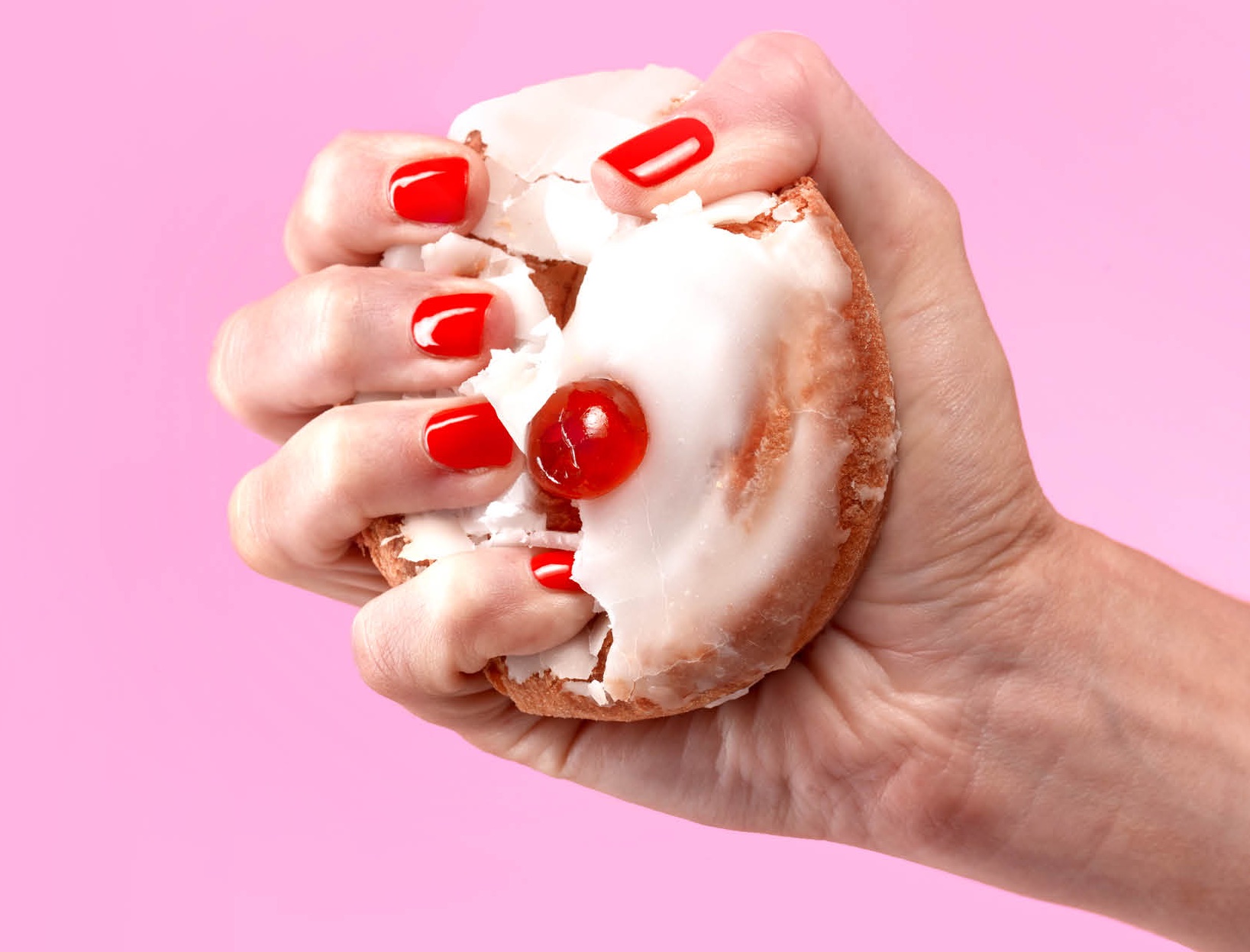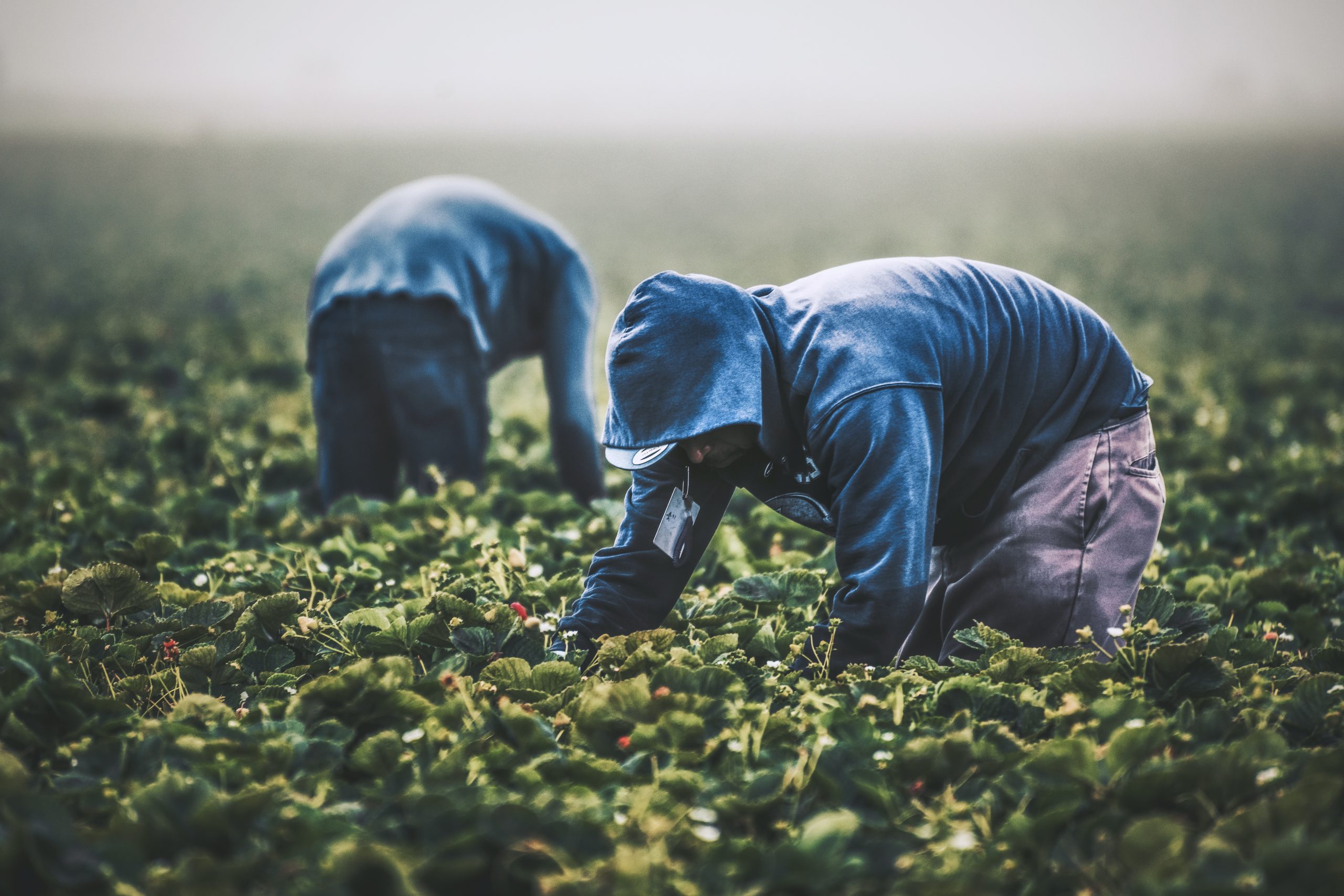the bodega project
Sundays in Flushing at the Korean Grocery
Patricia Park on the cultural practices we preserve, those we lose, and the Queens shop where bodegueros go for memories of home
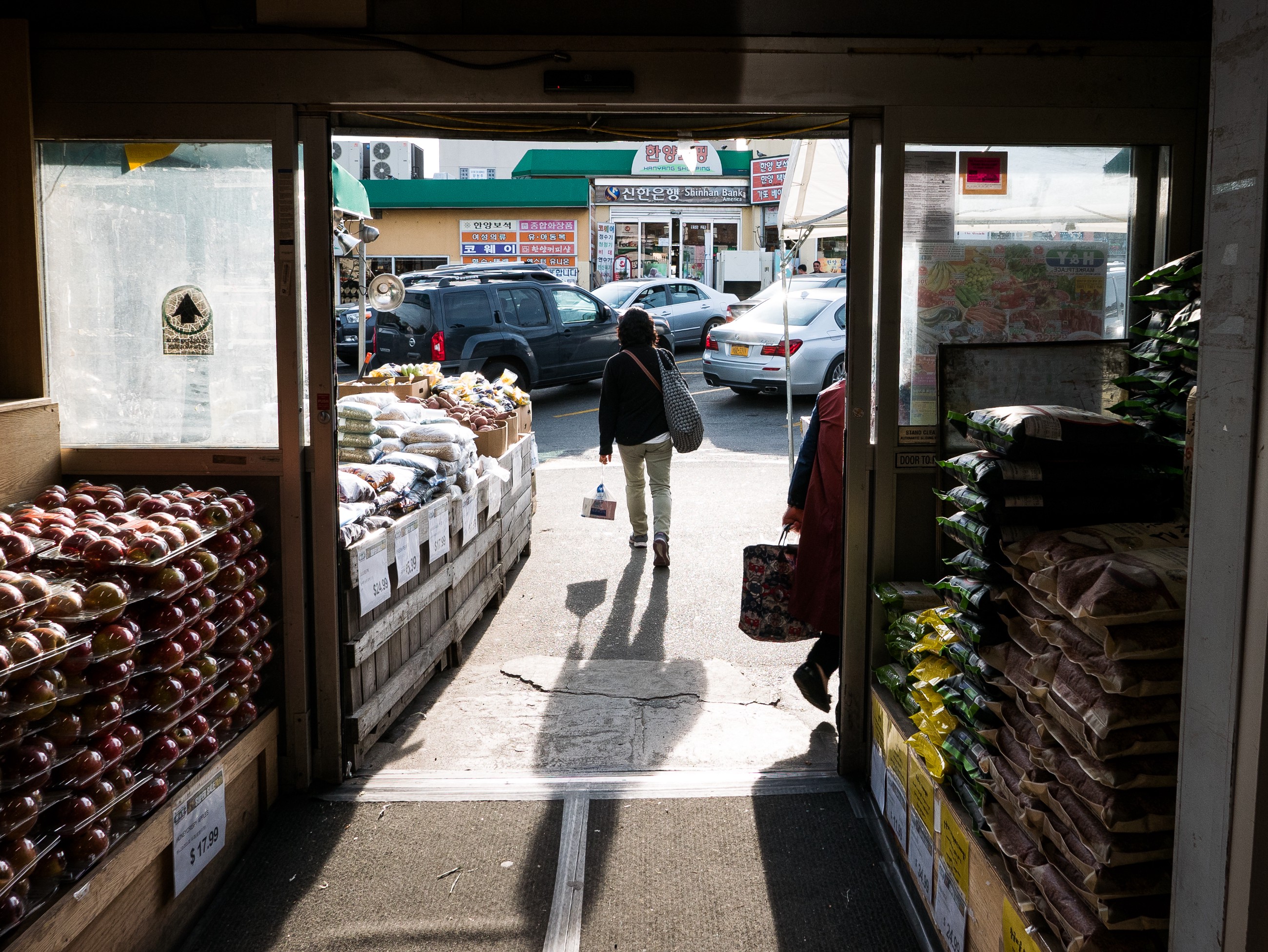
By Patricia Park
Presenting the third installment of The Bodega Project, where authors from across New York reflect on their community through that most relied-on and overlooked institution, the bodega. Read the introduction to the series here.
Everyone knows the Korean bodega, that ubiquitous fixture of the New York landscape — with its flowers and fruit out front, Tropicana and Corona in the cooler, Marlboros and Trojans behind the counter. But no one stops to wonder where the Korean bodegueros go for their own daily provisions.
Ironically enough, we didn’t have “Korean bodegas” in Flushing — home to the largest Korean community in New York, and second largest in the country after L.A.’s Koreatown. They’re an American construct, designed to please the Western palate. Instead we shopped at the Korean grocery store, teeming with the sorts of goods (usually of the fermented, pungent, foreign variety) no bodega owner would dare stock in his own Manhattan store.
We were a family of grocers, and on Sundays after church we went to Hanyang Mart on our side of Northern Boulevard, next to the Kentucky Fried Chicken. The parking lot would be filled with other Korean families also stocking up on the week’s groceries. On the opposite side of the boulevard, next door to Edward D. Jamie Jang-ui-sa where my grandparents had their funeral Mass, was another mart called Hanareum — now donning the English-friendly appellative H-Mart. Pre-dating both was the Guhwa in the heart of downtown, where we used to shop before my mother learned to drive a car. If you’ve ever passed down Northern, with its auto body shops, ethnic eateries, and fast foods of both the chain and mom-n-pop variety, you’d know there was nothing trendy about our corner of Queens.
In the colder months we’d pull up to the aroma of goguma — Korean sweet potatoes — roasting over a coal fire under a tent. It was my parents’ favorite treat when they were growing up, but my siblings and I were not interested in goguma. You had to peel back its cumbersome purple skin to scoop out the soft, caramelized flesh steaming inside. “This like pure candy!” my father would argue. We begged to differ, preferring our desserts to be more obvious, more American, the kinds a Korean grocer carried but never brought home to his family: Oreos and Reese’s Pieces and Jell-O Pudding so cloying our taste buds were shocked to numbness.
I realize now that for my parents, and for most of their immigrant generation, the goguma was their madeleine — one bite brought them right back to childhood and the home villages they had left behind.
Most days my mother’s shopping list was simple:
— dashima: dried kelp
— miyeok: dried seaweed
— myeolchi: dried anchovies
— doenjang: fermented soybean paste
— gochujang: spicy red pepper paste
— bundles of scallion, watercress, and mugwort
— mackerel for pan-frying
— 40-pound bag of mepssal: short-grained white rice
— 10-pound bag of chapssal: sweet, glutinous rice
— various namul — wild herbs — whose names I never learned in English (if they even exist at all)
— a box of Asian pears, because invariably someone in the community was moving house, or opening a new business; giving birth, or passing on.
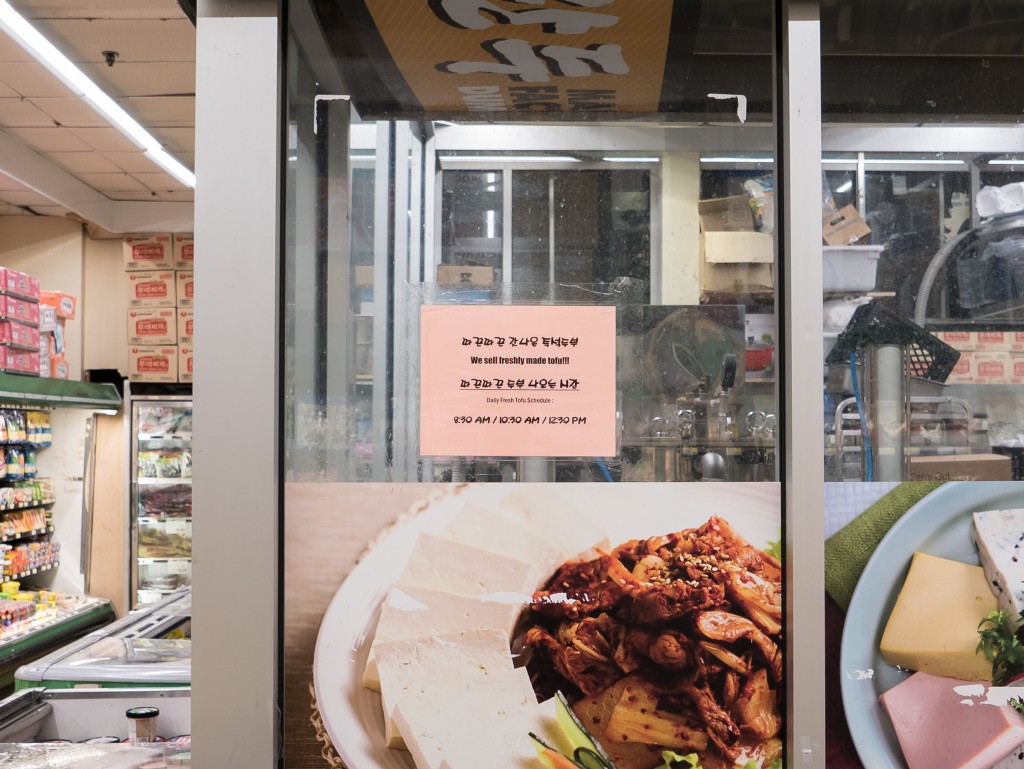
It was only on banquet days that my mother would toss in the extra-fancy foods: cellophane noodles for japchae, mandu wrappers for dumplings, rice flour for scallion pancakes, or beef short ribs for barbecued galbi, which she marinated in soy sauce sweetened with kiwi or Asian pear. A box of Napa cabbage and ten pounds of Korean radish would be added to the cart maybe once a season, to make large batches of kimchi to share with extended family.
Yet each item that landed in our grocery cart, I would later learn, had been a negotiation between my mother’s Northern roots and my father’s Southern ones. Take, for example, the staple dish miyeok-guk: seaweed soup. New mothers eat it to replenish nutrients after giving birth. Children eat it on their birthday, perhaps to honor their mothers’ suffering during said childbirth. Some families eat the soup with every meal — which makes me wonder about the filial guilt ladled with each spoonful.
Yet each item that landed in our grocery cart, I would later learn, had been a negotiation between my mother’s Northern roots and my father’s Southern ones.
My mother grew up eating a version of miyeok-guk with bits of beef to flavor the broth. “Because so cold, North Korea,” my mother would explain. “We needing the meat.” While my father’s family, who lived near the Donghae Sea, prepared it with clams or mussels.
My mother’s American compromise combines both seafood and meat.
It is funny to think of my mother as a grocery shopper, because much of what she buys (often in bulk) ends up immediately stashed in the freezer or aging in the larder. She eschews her brand-new purchases in favor of the older ones decomposing in the crisper or passing their expiration date in the pantry. For her, cooking is an endless game of preservation and survival — salvaged scraps stretched into something if not delicious, then at least nourishing in the most fundamental sense. According to my father, my mother is a terrible cook. According to my siblings, she is still reliving the War, frozen in her refugee ways.
I’d peer into the carts and baskets of the other Hanyang shoppers to see variations of our same Korean meals. Similar negotiations must have taken place in each of those households. Which cultural practices were forced to assimilate, and which were simply lost?
We did not socialize at Hanyang; that happened in our church basement. Yes, you were seen and heard at the market (our community was only so big) but it was not a place to linger. Still, sometimes we ran into other ajumma’s — ma’am’s — from church. They shared the same diminutive stature, permed bobs, and pancake makeup to prevent tanning from the sun. We’d bow, and they’d share news of which melons were on sale, which greens looked fresh and which to avoid. We’d exchange short pleasantries like these before pushing on our way.
Though once, as a teen, I refused to get out of the car to accompany my mother into Hanyang. I was wearing perhaps my bulky volleyball uniform. I feared running into someone I knew from church, I feared being judged for my unfashionable clothes, I feared how their judgment would reflect badly on my family as a whole. The anonymity that comes with grocery shopping was a sensation I would only experience after I moved out of my parents’ home.
Over time, Hanyang devoted an aisle to “American” merchandise: Kellogg’s cereal, Wonder bread, Skippy peanut butter. But I never saw white kids from school shop there. Their families went to the Key Food just off Utopia Parkway — which has since closed.
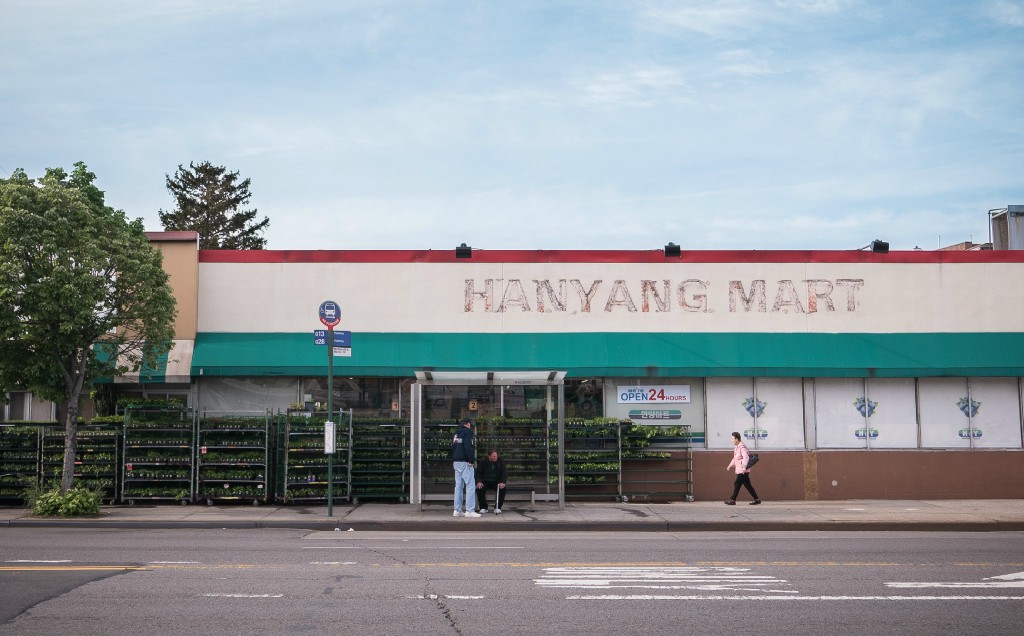
I don’t shop much at Hanyang anymore. In yet another irony, the very foods I felt ambivalent about in childhood have seeped into the mainstream. Bibimbap is a regular fixture on the midtown lunch circuit. Kimchi, gochujang, toasted seaweed all come in hip packaging with no embarrassingly misspelled English labels. Korean food is #trending.
Just as Flushing is also changing. On my most recent trip to Hanyang, to buy ingredients to prepare my mother’s seventieth birthday dinner, I recognized not a single face from my community. The old waves have migrated east toward Long Island, or have passed away. The new waves speak a modern Korean that sounds foreign to my ears. The butcher’s assistant, a young Latino man, helped me select cuts of meat for the miyeok-guk, the japchae, the mandu. We spoke a pastiche of Spanish and Korean — when a word in one language failed us, we switched to the other. Once or twice I bumped carts with ajumma’s who were not Korean at all, but Chinese.
The old waves have migrated east toward Long Island, or have passed away. The new waves speak a modern Korean that sounds foreign to my ears.
I recently learned Hanyang was the name for Seoul during the Joseon Dynasty. Schoolchildren in Korea learn this fact from Day 1, and I imagine there is something laughable about the disconnect between a plain grocery — seated on this blue-collar, commercial stretch of Queens — and the regal capital of kings and queens from six hundred years ago. But for me, it evokes beyond its historical legacy. Its American identity as a Korean grocer’s grocery is the only Hanyang I’ve ever known.
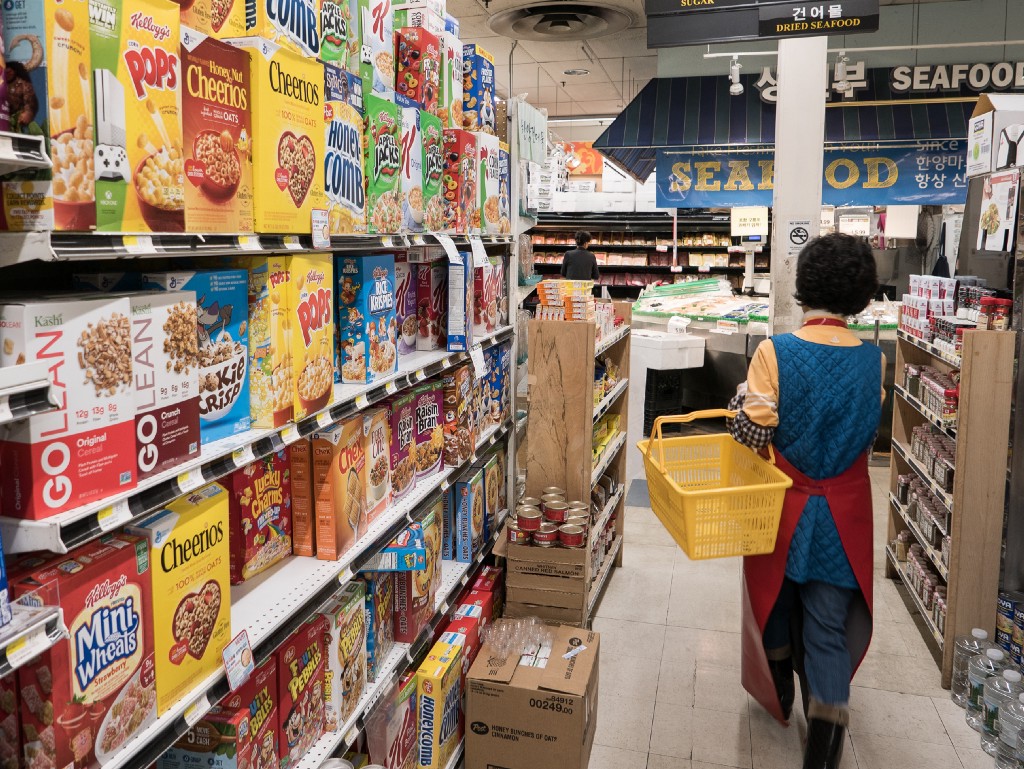
About the Author
Patricia Park is the author of the novel Re Jane, named Editors’ Choice by The New York Times Book Review, Best Books of 2015 by American Library Association, and currently in development for a television series with Paramount and TV Land. She was born and raised in Queens, NY.
— Photography by Anu Jindal
The Bodega Project – Electric Literature
— The Bodega Project is supported by a grant from the New York City Department of Cultural Affairs.






